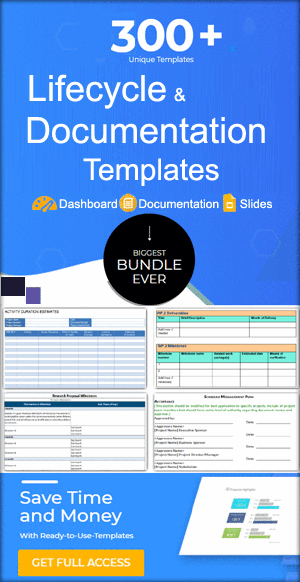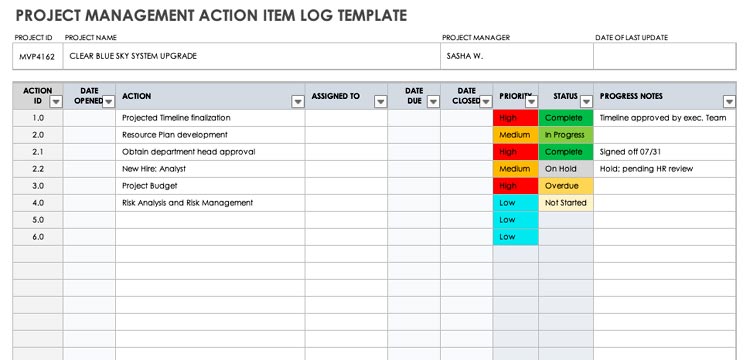Project Quality Management Plan Template Word

As we know quality is very important when it comes to business. The project manager always has a special place for the quality management plan in every project plan. It is progress that goes through and runs along every stage of the project.
It is not known to be a separate process it is part of the project development and continues throughout the project as it proceeds. Whether it is an initial stage or monitoring or controlling stage you must maintain the quality of your project. And this can be done by using a proper project quality management planning template.
Therefore, quality is something you cannot neglect at any cost. Since it is essential for you to satisfy your stakeholders and customers.
And this can only be done if you provide the best quality work order and end products to them. This process basically a description of the plan that how the quality will be maintained from the start till the completion of the project.
Quality Management (QM) Plan Components
Project quality management is vital to provide the best and high outcomes and deliverables at the end of the project. The most important and extremely crucial parts of this process are quality assurance and quality control.
Project quality management basically mainly comprises the following stages:
- Quality Description and Project Planning
- Quality Assurance
- Quality Control
- Quality Developments
Project Quality Management Plan is a crucial document that outlines the strategies and methodologies to ensure the delivery of a high-quality project.
The plan serves as a roadmap, guiding the project team and stakeholders on how to achieve and maintain the desired level of quality throughout the project’s lifecycle. To facilitate the creation of such a plan, a Project Quality Management Plan Template in Word format can be immensely valuable.
Related Template: Project Acceptance Criteria Template
Review Checklist: Process Quality Assurance
| Project Schedule Management | |||
| Yes | No | Comments | |
| Do project schedule review meetings occur? | |||
| Project schedule review meetings are well attended? | |||
| Modifications to the project schedule approved and tracked? | |||
| Are impact estimations occurring outside of/prior to the schedule modification process? | |||
| Roles and responsibilities are well defined? | |||
| Action items from review meetings are documented and tracked to completion. | |||
| Design Review | |||
| Yes | No | Comments | |
| Do design review meetings occur? | |||
| Design review meetings are well attended? | |||
| Modifications to the design documents are approved, tracked, and documented appropriately. | |||
| A process is in place to communicate design changes to the Development and Testing teams? | |||
| Roles and responsibilities are well defined? | |||
| Executive review and analysis of design quality, based on checklists, occurs on schedule. | |||
| Design review processes are implemented to ensure that the design inputs were correctly selected and incorporated. | |||
| Change Management | |||
| Yes | No | Comments | |
| Change Management meetings occur? | |||
| Meetings are well attended? | |||
| Agenda created for each meeting and distributed 24 hours prior? | |||
| Minutes for each meeting posted within 24 hours of the meeting end? | |||
| A process is in place to communicate approved changes to the Development and Testing teams? | |||
| Roles and responsibilities are well defined? | |||
| Risk & Issue Management | |||
| Yes | No | Comments | |
| Meetings are well attended? | |||
| Agenda created for each meeting and distributed 24 hours prior? | |||
| Minutes for each meeting posted within 24 hours of the meeting end? | |||
| Risks & Issues appropriately categorized based on risk level, impact, etc.? | |||
| Roles and responsibilities are well defined? | |||
| Risks & Issues are escalated to Senior Management as needed. | |||
| Peer Review | |||
| Yes | No | Comments | |
| Peer reviews in place and results are documented? | |||
| Formal and informal reviews in place? | |||
| Test Management (Software Validation and Verification) | |||
| Yes | No | Comments | |
| Test review procedures are well-defined? | |||
| Rigorous verification approach in place and being used? | |||
| Test procedures are self-explanatory (can be understood by someone other than the author). | |||
| Test results are tracked in the testing tool? | |||
| Appropriate for the degree of software criticality? | |||
| Test review procedures are well-defined? | |||
| Defect Management | |||
| Defect process is being followed per the approved defect management plan? | |||
| Defects are tracked in the Defect Management tool? | |||
| Defects reports are produced as agreed in the defect management plan? | |||
Quality Management Plan PMBOK
In the first step, you must characterize and plan for quality assurance. In this part, the main objective and requirements regarding quality are discussed. And then the work is allocated to different individuals is assigned according to project needs.
Quality Assurance
Then comes quality assurance which helps in making sure that the quality standards are met or not. As we all know that we cannot compromise on quality when we are handling an ongoing project. This basically is an inspection for the quality to make sure everything is going as planned and at good quality. If there is an unsatisfactory outcome, then this is the step where you find the problem and resolve it according to standards.
Quality Control
After that, there is quality control which supports examining and documenting the quality of all the tasks in the project. It also makes sure the quality has no hurdles in its way. If there is any problem recorded, then it will be eliminated immediately by taking quality control measures. In simple words, this process serves as a watchman for the quality of your project deliverables. For batter management, you can add charts and checklists at this stage of the process.
Related Content: Project Closure Report Template in Excel
Quality Review Form (QRF)
In this part, all the developments and changes regarding quality are recorded. This helps in the further development of the project and provides a log for quality for use in the future as a reference.

Why is Quality Management needed?
Quality management is crucial in maintaining the quality of your business overall. It also is important is keeping the right balance and deliver a quality outcome in the end. Mostly the project managers get more interested in the scope and objective of the project, but you cannot overlook the quality because it plays the most important role in the success of any project.
- Stakeholder satisfaction must be your priority and that can only be done by providing good quality of work.
- Customer satisfaction must also be given priority and then also only be achieved by delivering high-quality goods.
- Good quality maintenance will help you be successful and compete with your competitors.
- To complete the budget on time within the assigned budget you must maintain good quality throughout the projects.
- Another very important benefit of the quality management plan is that it helps you in maintaining continuous and steady progress throughout the life of your project.
- Quality management planning will help you to keep on the right track and provide the required expected high-quality outcome at the end.
Quality Management Plan Example in Construction
As we all know that construction is one of the biggest industries in the world. And maintaining good quality and expense management is one of the challenging tasks in construction projects. And the projects need quite a lot of investment to achieve the required goal.
The main and most essential goal in a construction project should be a quality under-allocated budget. This goal can only be attained by implementation a proper quality management plan.
As you must satisfy the needs of your customers and quality is something people do not neglect and compromise on when it comes to construction projects.
Therefore, you must make sure that the construction project you are working on is running smoothly and high quality is maintained throughout each step.
Gantt Charts for Quality Management
As we know that Gantt chart is one of the most helpful tools when it comes to monitoring and controlling your business. It serves not just only as a roadmap for your project but has a great contribution to quality management as well. For instance, it helps in maintaining good quality deliverables through the different phases of a project.
Project Quality Management Plan Template in Word provides a standardized and user-friendly format for documenting key quality management elements.
It typically includes sections such as the project’s quality objectives, the roles and responsibilities of team members concerning quality assurance and control, the processes for identifying and resolving quality issues, and the methods for validating and verifying project deliverables.






